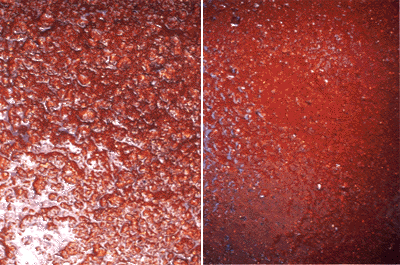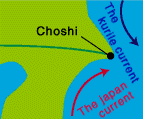> 日本語
 Yamasa soy sauce factory visit
Yamasa soy sauce factory visit
- Fermentation and aging -Activity of microorganisms in the tank.
 |
Moromi continues to change in the tank for several months. During this period, enzymes, yeast, and microorganisms such as lactic acid bacilli, formed from Yamasa Koji, work actively in the tank. Decomposition of the ingredients during fermentation process makes Moromi tasty by generating various important components for soy sauce, which are flavor, color, and aroma. Skilled craftmen at the factory stir Moromi with fresh air in order to create favorable environment for microorganisms. |
 |
It takes as long as several months !  Moromi aged 3 months(left). Matured Moromi(right). |
 |
Yes, the microorganisms keep working in the tank for a long period of several months. Flavor, color and aroma of soy sauce are generated and improved slowly during this time. It is called aging. Temperature and humidity are important factors to produce good soy sauce during the process of aging. |
 |
Soy sauce is very sensitive to its environment, isn't it ? |
 |
Why is Choshi good for soy sauce production ? |
 |
Choshi has become one of the major locations for soy sauce production in Japan because its climate is suitable for soy sauce brewing. Because Choshi sticks out into the Pacific Ocean as well as a cold current and a warm current meet in the water off Choshi, it is cool in summer, warm in winter, and humid throughout a year. This climate helps activate microorganisms. In addition to the climate conditions, its location was also a reason for Choshi to become a main producer of soy sauce. In the old days, soy sauce was transported to Edo (now Tokyo) from Choshi via Tone River by ship, which then carried back soybeans and wheat harvested in the Kanto Plain. Such transportation also contributed to the development of soy sauce production in Choshi.
|

